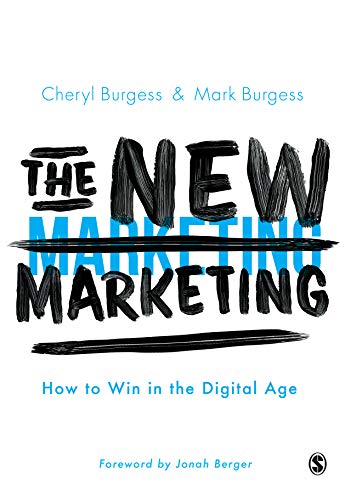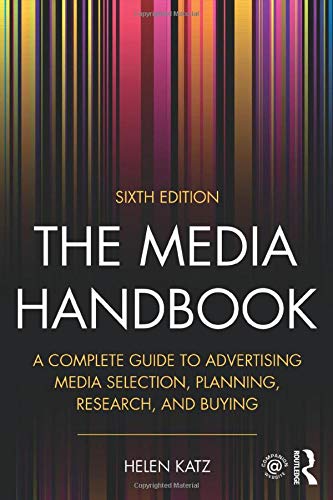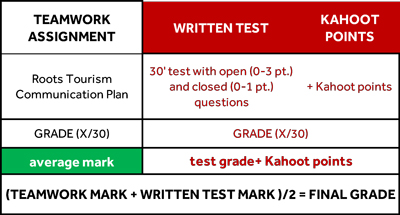Course description
Effective brand management is the key to developing products and communication strategies that lead to marketing success.
Strong brands earn loyalty, add value and convey change.
This course is designed to give a fundamental understanding of what is a brand and how to create, measure and manage successful brand strategies and integrated communication plans.
It explains how to define and position a brand and communicate the brand effectively internally and externally, via owned, earned and paid media.
There will be 9 frontal lessons for a total of 30 hours, starting from October, 4 2022.
Course objectives
At the end of the course the student will:
- Understand what is meant by brand and what are the resources behind the creation of value
- know how to set up a Brand Value Proposition and a Brand Book
- Have learned the basics of managing a brand portfolio and defining a brand architecture
- Know the main stages of the development of an integrated communication plan according to the most recent theories.
- Know how to choose the most suitable communication instruments according to the objectives
- Have acquired the basics to plan and purchase offline and online media
- Know how to set a communication budget and what data to use to evaluate its effectiveness and efficiency
The course adopts a problem-based approach in order to offer students the opportunity to apply theories and models to concrete cases and to develop effective, realistic and implementable communication plans. To this end, lectures will be widely integrated with exercises aimed at encouraging interaction, case analysis and project works.
Course content
The course will deal with the different aspects concerning the design, setting and implementation of a communication plan for a brand.
In the first part of the course the introductory topics concerning the brand will be covered: the definitions and main theories, the brand building process, how to express a brand, how a brand portfolio is effectively managed and the measurement of brand value.
The second part the course will get to the heart of the communication plan setting. After introducing the media according to the POE classification (Paid, Owned and Earned), we will deal with the aspects that concern planning and purchase of paid media, with particular attention to the digital ones.
Finally, we will see how to set up a communication budget and how to measure the effectiveness and efficiency of the activities implemented.
Apart from an introduction, the digital platforms analytics (eg Google and social networks) will not be dealt with.
THE COURSE WILL BE HELD IN ENGLISH.
Topics of the lessons
The list and topics of the lessons, as well as the slides and other materials presented in the classroom (eg videos) will be published, during the course, on this website: https://www.stellaromagnolilezioni.com/BMMP_2022_23/index.php. The following is a concise list of the topics that will be covered, but it should be considered as purely indicative: the teacher could introduce changes at any time.
- Course introduction
- Brand history and definitions
- Brand building process
- Brand Identification System
- Brand choreography and customer journey
- Owned, Earned Media, Paid Media BTL (events, sponsorship, PP, BC & Influencer MK)
- Paid media ATL: Video, Audio & Text
- Offline and online media key metrics
- Display ads, programmatic, native advertising
- Google Ads and Meta for Business and other social media platforms
- Communication budget
- Brand value & brand audit
- Brand management
Exam texts
To prepare for the exam, students are required to study ALL the articles, videos, handouts and slides that will be found on this course website: https://www.stellaromagnolilezioni.com/BMMP_2022_23/index.php.
No other text is required.
However, for those wishing to have reference texts, you can consult:

Building strong brands, David A. Aaker, Pocket Books 2010

The New Marketing, Cheryl Burgess and Mark Burgess, Sage 2020

The Media Handbook, Helen Katz, Routledge, sixth edition 2017
Prerequisites:
Fluency in English, basic marketing knowledge.
Verification of learning (Exam) - "Non-attending" mode
Non-attending students will have to take a written test with open and closed questions lasting 30 minutes and an oral exam which will have the purpose of evaluating the understanding of the program topics.
The oral exam, consisting of 3-4 open questions on the program, can add a maximum of 3 points, but can also reduce them or define the preparation as inappropriate.
To pass the test and proceed with the oral exam the student must have scored at least 15 points.
Full grade: 30/30 cum laude.
Verification of learning (Exam) - "Attending" mode
Students who participate in at least 70% of the assessment sessions via Kahoot will be considered attending. These quizzes will take place at the end of almost all the lessons to evaluate the understanding of the topics just exposed.
Students who belong to the first half of the final class ranking (by score obtained) will get 1 point to add to the result of the written exam. Other reward points will also be awarded during the course, through participation in Kahoot on topics of particular importance.
Attending students will be organized, at the beginning of the course, in groups and will carry out 1 project work. It will be possible to participate in the "attending" mode even without being enrolled in a group, but it is strongly discouraged.
All attending students will have to take a written test with closed questions lasting 30 minutes. The test is considered passed if the score obtained is at least 15.
The final grade of each student will be determined as follows:
- For those who carry out the group works, the vote will consist of the marks of the project work, which replaces the oral exam, and the final test score + Kahoot points won = {(PW grade) + [(test grade + Kahoot points) / 2)]} / 2
There is also a peer review, which may include penalization or cancellation of the grade of the project work for the student who has not contributed inside the team.
The criteria used for the evaluation of the group works are expressed in a rubric with scores (maximum 31/30) provided at the time of the briefing.
This table explains in detail how the final grade is calculated. The topics of the project works will be defined during the course.

- For the attending student who does NOT carry out group activities, the mark will consist of the final test score + Kahoot points won and the oral. The oral exam, consisting of 3-4 open questions on the program, can add a maximum of 3 points, but can also reduce them or define the preparation as inappropriate.
The project works’ marks and the points obtained through participation in the Kahoot assessments are valid for the entire academic year, regardless of the exam session.
It is not possible to repeat the exercises.
Full grade: 30/30 cum laude.
Expected learning outcomes (Dublin descriptors)
Knowledge and understanding
At the end of the course, students must know:
- The appropriate terminology to define branding, planning and media buying activities
- The fundamental concepts regarding the brand and its management, the advertising budget and the communication plan
- The characteristics of the different media
- How media audiences are measured
- Where to find the information needed to set the advertising budget
- How does the planning process work and who are the players in the sector
Applied knowledge and understanding
Students must be able to set up a brand building process, choose the most suitable media to achieve the communication objectives and set up an offline and non-automated online media plan.
The student must also be able to set a communication budget request document.
Autonomy of judgment
Students must be able to evaluate a brand with desk analysis (Kapferer Prism), understand if the identity elements of the brand and the brand value proposition have been set correctly.
They must also be able to understand if one media is more effective or efficient than another in the context of a communication strategy, and if a communication plan is professionally set up.
Communication skills
Students should be able to present their works in a clear, complete but concise way, using the most appropriate terminology. They will have to be able to effectively explain the reasons for their choices, and to be convincing on the proposals, both through visual tools (eg power point) and in person.
Ability to learn
Students must be able to orient themselves in the macro-sector of branding and media planning, know where to find information and choose the most useful data sources for carrying out their work, have a knowledge base that can easily allow them to update in a highly strategic and innovative sector.
| DAY | TOPICS |
|---|---|
| Tuesday - October, 4 (2h) | Introduction, brand definitions |
| Thursday- October, 6 (2h) | Branding process |
| Friday - October, 14 (4h) | Brand Identification System | Brand choreography & customer journey POE MEDIA | briefing assignment |
| Friday - October, 21 (4h) | Paid Media: BTL and ATL |
| Friday - October, 28 (9.00 - 13.00) | Key Media Metrics offline and online | Digital advertising planning |
| Friday - November, 4 (4h) | Google Ads | Social media advertising | Briefing Facebook campaign for the project work |
| Friday - November, 11 (3h) | Communication Budget | Media planning process |
| Friday - November, 18 (4h) | Brand Management | Brand Value - Audit |
| Friday - November, 25 (4h) | Final presentations and exemption test |